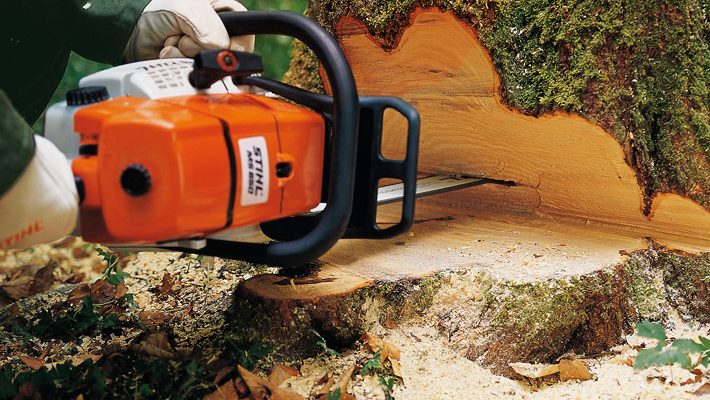
In the realm of forestry, construction, and even artistic endeavors, the chainsaw stands as a versatile tool, capable of various tasks from felling trees to crafting intricate sculptures. However, wielding this powerful machine demands respect, skill, and knowledge to ensure safety and effectiveness. In this guide, we delve into the intricacies of utilizing a chainsaw machine, covering essential techniques, safety protocols, and maintenance tips to empower both novices and seasoned operators.
Understanding Your Chainsaw:
Before embarking on any operation, familiarize yourself with the anatomy of your chainsaw. Components such as the engine, chain, guide bar, throttle trigger, and safety features should be understood thoroughly. Referencing the manufacturer’s manual is crucial for identifying specific parts and their functions.
Safety First:
Operating a chainsaw entails inherent risks, necessitating strict adherence to safety procedures:
- Personal Protective Equipment (PPE): Prioritize safety gear including a hard hat, eye protection, ear defenders, gloves, leg protection, and steel-toed boots to shield against potential hazards like flying debris and noise pollution.
- Site Assessment: Survey the work area for obstacles, uneven terrain, and overhead hazards like power lines. Ensure proper clearance and secure footing before commencing any cutting.
- Proper Technique: Adopt correct body posture and grip technique to maintain balance and control while reducing fatigue. Maintain a firm stance with feet shoulder-width apart and utilize both hands to manage the saw securely.
- Maintain Distance: Maintain a safe distance from bystanders, fellow workers, and pets to prevent accidents caused by kickback or falling debris.
- Emergency Preparedness: Equip yourself with a first aid kit and have an emergency action plan in place, including knowledge of how to stop the chainsaw quickly in case of an emergency.
Mastering Chainsaw Techniques:
- Starting the Chainsaw: Follow the manufacturer’s instructions for starting the chainsaw safely, ensuring proper fuel mixture and chain tension.
- Felling Trees: Mastering the art of tree felling requires strategic planning, precise cuts, and understanding the tree’s lean. Employ techniques such as the open-face notch and back-cut method to control the direction of fall accurately.
- Limbing and Bucking: After felling a tree, remove branches (limbing) and cut the trunk into manageable sections (bucking) using appropriate cutting angles and avoiding cutting through the ground to prevent damage to the chain.
- Maintenance and Troubleshooting: Regular maintenance is essential for optimal chainsaw performance. Keep the chain sharp, lubricate the chain and guide bar, clean air filters, and inspect for any signs of wear or damage. Familiarize yourself with common issues such as chain tensioning and fuel system problems to troubleshoot effectively.
Conclusion:
Operating a chainsaw machine is a skill that requires a combination of knowledge, practice, and caution. By understanding the intricacies of chainsaw operation, prioritizing safety, and mastering essential techniques, operators can harness the full potential of this powerful tool while minimizing risks. Remember, proficiency comes with practice, so approach each task with diligence and respect for the tool’s capabilities.

